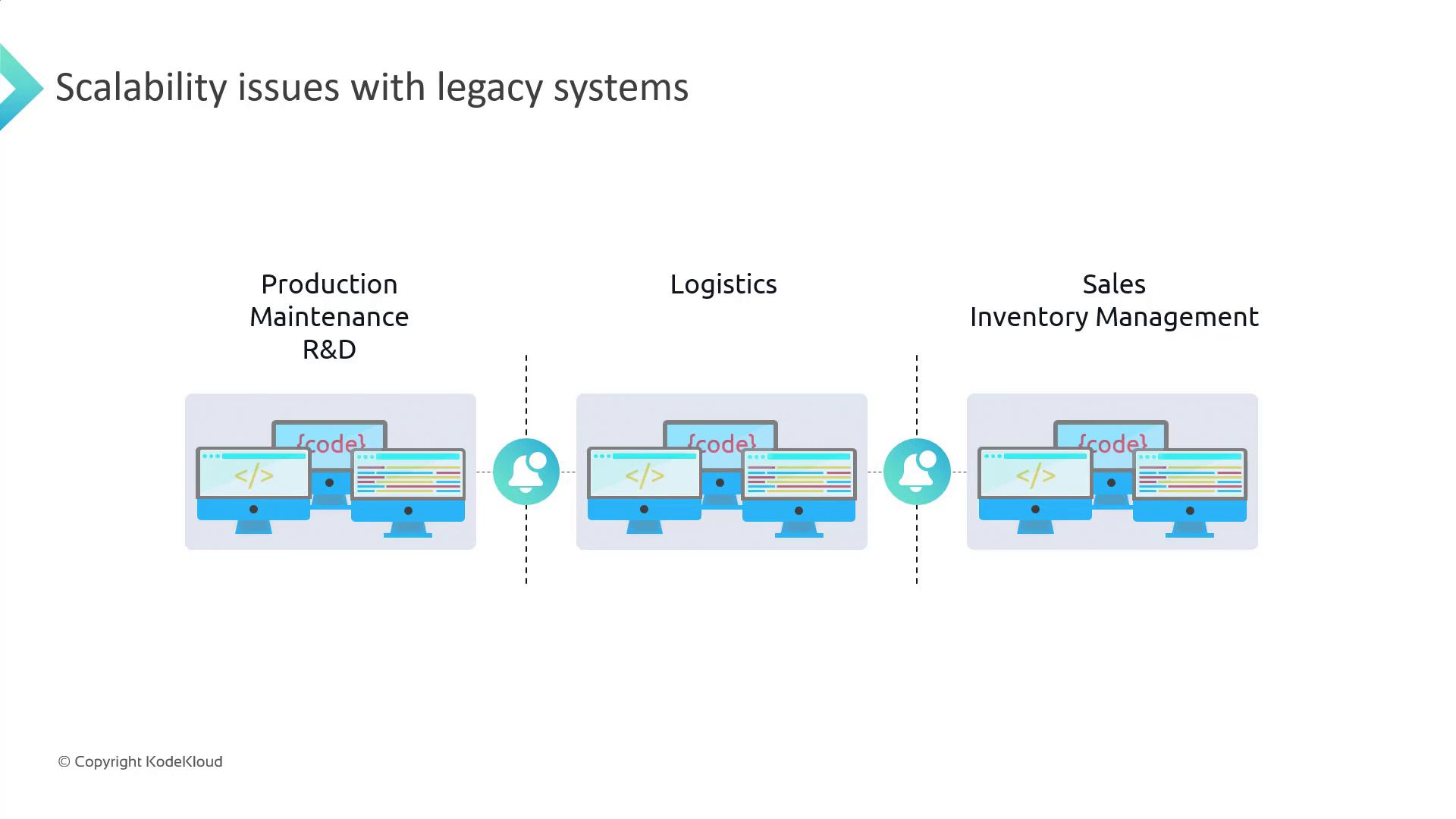GCP Cloud Digital Leader Certification
Building APIs in GCP
How APIs can modernize legacy systems
Welcome to this lesson on modernizing legacy systems using APIs. In this session, we’ll explore the challenges presented by traditional legacy infrastructures and examine how APIs—complemented by the robust services of Google Cloud Platform (GCP)—can resolve these issues.
In many organizations, teams such as production, maintenance, research & development (R&D), logistics, sales, and inventory operate both independently and interdependently. For example, in our pharmaceutical company scenario, while each team runs its own applications, they require seamless integration to share critical information. The logistics team, for instance, depends on data from production, maintenance, and R&D, whereas sales and inventory need real-time updates from logistics.

Each department typically manages its own application, yet effective data exchange between these applications is crucial. For example, maintenance and R&D might develop an application for the logistics team to confirm that a package is ready for shipment. Similarly, when shipments take place, the sales and inventory systems must be updated in real time. This scenario underscores the challenge of ensuring efficient communication between independently developed systems operating in a tightly coupled environment.

Integration Beyond Internal Systems
In many cases, internal communications extend to external interactions. For instance, when the sales and inventory departments process orders, they may integrate with banking systems using credit or debit card APIs to securely handle transactions.
This interdependency has given rise to what is known as microservice architecture. In this approach, independent software components—often developed by different teams—communicate efficiently using well-defined APIs. This structure not only streamlines internal processes but also offers the flexibility to interface with external systems, thereby establishing a robust and scalable microservice ecosystem.
In the next section, we will delve into how these independent services interact and integrate within a microservice framework to form a cohesive and modern system architecture.
Thank you for joining this lesson on how modern APIs can revitalize legacy systems.
Watch Video
Watch video content